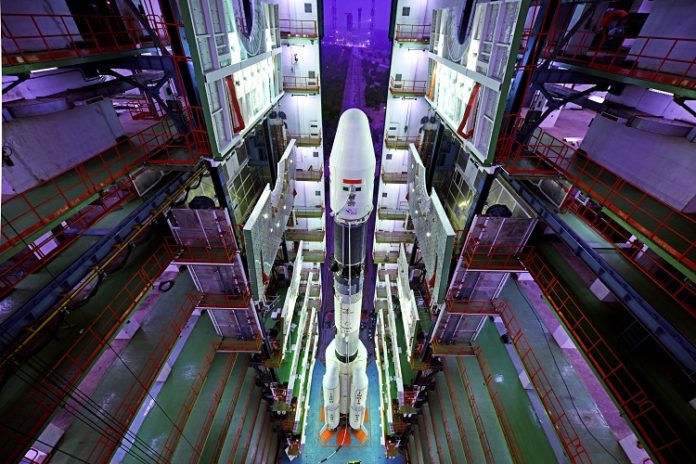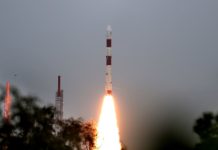Update, 1 April 2018: ISRO has lost contact with the GSAT-6A, with the following statement being released on the website:
“After the successful long duration firings, when the satellite was on course to normal operating configuration for the third and the final firing, scheduled for April 1, 2018, communication from the satellite was lost.
Efforts are underway to establish the link with the satellite.”
This page will track further developments, if any.
Today, at 16:56 IST(+4.5 UTC), India’s space agency the Indian Space Research Organisation (ISRO) launched its GSAT-6A using the GSLV-F08, the eighth operational flight of its GSLV Mark II rocket. The launch took place from the Second Launch Pad (SLP) at India’s orbital launch site, the Satish Dhawan Space Centre SHAR, at Sriharikota.
The launch took 17 min 44 seconds to put the GSAT-6A, a communications satellite with an approximate liftoff mass of 2100 kg, in the Geostationary Transfer Orbit (GTO). The geostationary satellite will be used for mobile communications in India, with 5 S-band spot beams and one C-band beam, and will be positioned at 83 degrees East.
This was the 12th flight of India’s Geosynchronous Satellite Launch Vehicle (GSLV), and the 5th flight of the GSLV Mark II, the GSLV’s second iteration comprising a cryogenic upper stage. Unlike the previous GSLV-IIs, this vehicle utilized the new, High-Thrust Vikas Engine in its second stage. An improved version of ISRO’s Vikas, the engine used in all its vehicles, the High-Thrust Vikas adds an additional 6% of thrust. The second stage also saw the introduction of the new Electromechanical Actuation (EMA) system in place, made possible by ISRO’s lithium ion batteries. Both technologies were utilized during today’s launch as a test, and will most likely be used to launch India’s upcoming lunar mission Chandrayaan-2.
Today marked the second ISRO launch this year, with the first being the launch of Cartosat 2F using ISRO’s workhorse launcher, the PSLV. This was also the first launch since ISRO’s new Chairman K. Sivan took over – a fitting beginning because Sivan was responsible for the GSLV when it saw its first successful flight with a cryogenic engine, back in 2014.
Said Sivan, “Today, the 5th successful launch of the GSLV with an indigenous cryogenic stage successfully placed the high-power S-band communications satellite GSAT-6A in the designated orbit precisely…This GSLV-F08 [is enhanced] to give 50% more capability to the present system.”
ISRO is planning to launch another 10 missions this year, with the next one being the launch of IRNSS in 2 weeks’ time, using the PSLV.







